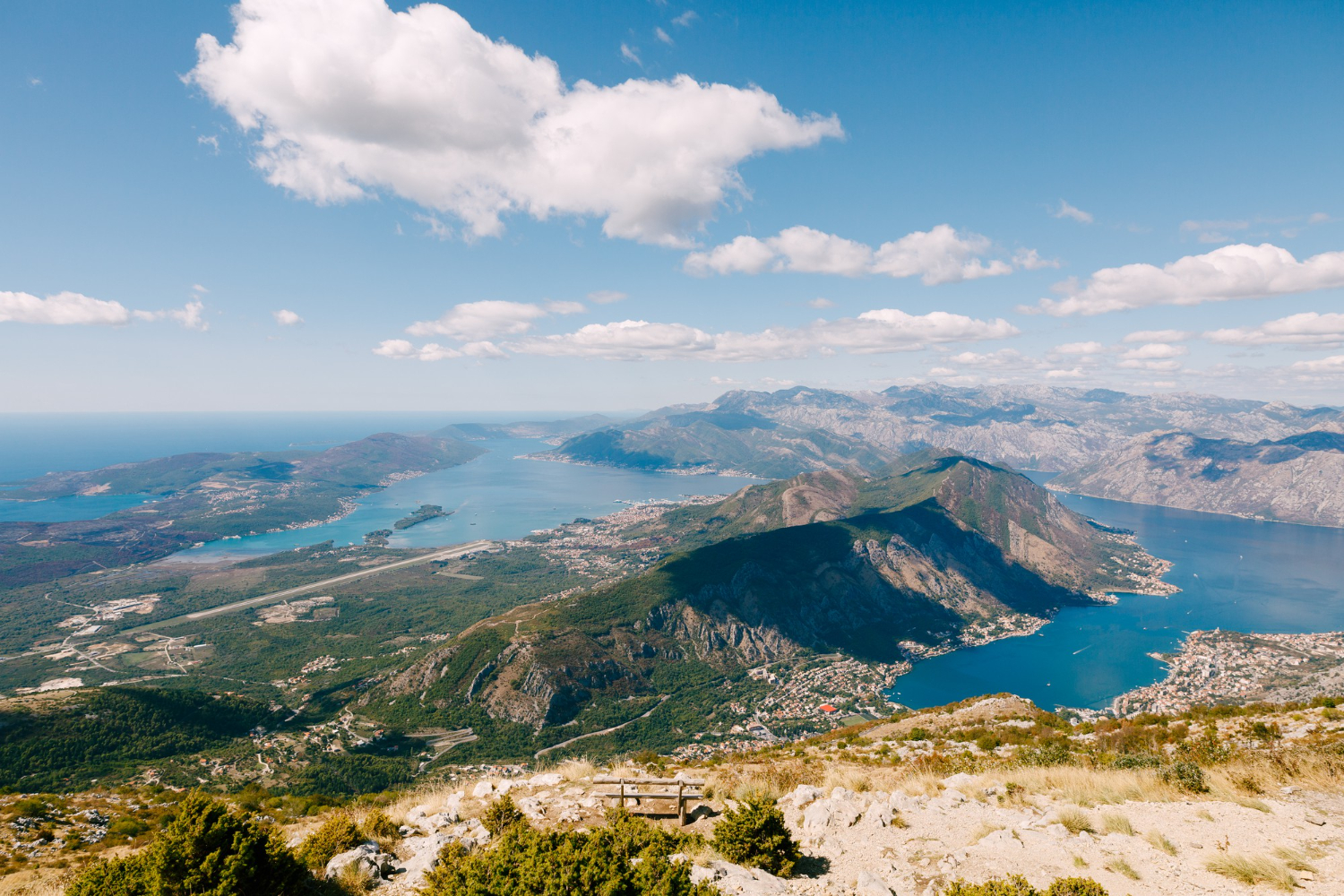Montenegro
Montenegro Country Guide

Montenegro is a small yet captivating country located in Southeastern Europe, on the Balkan Peninsula. The capital city is Podgorica, while Cetinje serves as its historical capital and cultural center. Montenegro is a unique destination that combines rich history with breathtaking landscapes and diverse cultures, making it an attractive place for residents and tourists.
Things To Know Before Going To Montenegro
- Tipping in Montenegro is not a common practice.
- In summer, especially near lakes and rivers, mosquitoes can be quite bothersome.
- Montenegro uses the euro as its official currency.
- The roads can be narrow and winding, especially in mountainous areas.
- Montenegro is a paradise for nature lovers.
- The oldest olive tree in the world, estimated to be nearly 2,000 years old, is located in Bar.
- Montenegro features 117 beaches ranging from sandy stretches to hidden coves.
- Montenegrin cuisine reflects its cultural influences, featuring fresh seafood along the coast and hearty mountain dishes inland.
Where is Montenegro?
Montenegro is located in southeastern Europe on the Balkan Peninsula. It shares borders with several countries: Croatia to the west, Bosnia and Herzegovina to the northwest, Serbia to the northeast, Kosovo to the east, and Albania to the southeast.
What is the Capital of Montenegro?
Podgorica is the capital and largest city of Montenegro. It is situated just north of Lake Skadar and close to the Adriatic Sea. it has a population of approximately 186,000.
Is Montenegro Expensive To Visit?
Visiting Montenegro can be relatively affordable, but costs can vary depending on your travel style and preferences. Budget accommodations like hostels start at around $7 to $10 per night, while mid-range hotels can cost between $30 and $65. Luxury hotels may exceed $100 per night.
Currency Of Montenegro
The currency of Montenegro is the euro (EUR). Despite Montenegro not being a member of the European Union, 2002 the country replaced the Deutsche Mark with the euro.
Is Going To Montenegro Worth It?
Yes, Montenegro is increasingly recognized as a worthwhile destination for travelers, offering a blend of natural beauty, rich history, and vibrant culture.
Is Montenegro Good For A Honeymoon?
Yes, Montenegro is a fantastic honeymoon destination, offering a mix of romance, adventure, and stunning scenery. The country boasts diverse landscapes, from the dramatic fjord-like Bay of Kotor to the rugged mountains of Durmitor National Park. Montenegro offers a range of luxurious hotels and resorts, particularly in places like Sveri Stedan.
Is Montenegro Safe For Tourists?
Montenegro is generally considered a safe destination for tourists. Montenegro has a low overall crime rate, making it one of the safest countries in Europe. Violent crime is rare, and most incidents reported are related to petty crime, such as pickpocketing, which can occur in crowded tourist areas like Kotor, Budva, and Herceg Novi.
Montenegro is regarded as safe for solo female travelers. Montenegrins are known for their hospitality and friendliness towards tourists.
Best Cities In Montenegro
Here is a table summarizing some of the best cities in Montenegro:
| City Name | Best For | Best Attractions | Average Trip Cost (per day) |
| Kotor | Historical charm | Kotor Old Town, St. John Fortress, Maritime Museum | €60 - €100 |
| Budva | Beaches and nightlife | Budva Old Town, Jaz Beach, Citadel | €80 - €120 |
| Perast | Scenic beauty | Our Lady of the Rocks, Venetian architecture | €50 - €90 |
| Tivat | Nautical tourism | Porto Montenegro, Plavi Horizonti Beach | €70 - €110 |
| Žabljak | Nature and adventure | Durmitor National Park, Black Lake | €40 - €80 |
| Sveti Stefan | Luxury and relaxation | Sveti Stefan Island, private beaches | €100 - €200 |
| Herceg Novi | Mediterranean vibe | Forte Mare, Kanli Kula, beaches | €50 - €90 |
| Stari Bar | Historical exploration | Stari Bar Fortress, Old Olive Tree | €40 - €70 |
Best Montenegro Attractions
Here is a bullet list of top attractions in Montenegro along with short descriptions:
- Kotor: A UNESCO World Heritage Site known for its medieval old town, stunning architecture, and panoramic views from the San Giovanni Fortress.
- Budva: Famous for its vibrant nightlife, beautiful beaches, and charming old town surrounded by ancient fortifications.
- Lovcen National Park: Home to the Njegoš Mausoleum and offers breathtaking mountain views and numerous hiking trails.
- Our Lady of the Rocks: A picturesque islet near Perast featuring a church and museum, celebrated for its unique history and stunning bay views.
- Durmitor National Park: A UNESCO World Heritage site known for its dramatic mountains, glacial lakes, and outdoor activities like hiking and skiing.
- Tara River Canyon: The deepest canyon in Europe, perfect for white-water rafting and zip-lining across the scenic Đurđevića Tara Bridge.
- Skadar Lake National Park: The largest lake in the Balkans, ideal for birdwatching, boat tours, and exploring quaint fishing villages.
- Cetinje: The historical capital of Montenegro with museums, art galleries, and the Cetinje Monastery reflecting rich cultural heritage.
- Ostrog Monastery: A stunning Orthodox monastery built into a cliff face, known for its spiritual significance and breathtaking views.
- Sveti Stefan: A luxurious resort island famous for its beautiful beaches and exclusive accommodations, connected to the mainland by a narrow isthmus.
The Best Time To Visit Montenegro
The best time to visit Montenegro varies depending on what you want to experience. Generally, the shoulder seasons of spring (April-May) and early fall (September-October) for a balance of good weather, fewer crowds, and lower prices.
Montenegro Language
The official language of Montenegro is Montenegrin, which was established as such in the 2007 Constitution following the country’s independence. In addition to Montenegrin, several minority languages are recognized in Montenegro, including Serbian, Albanian, Bosnian, and Croatian. Many Montenegrins, especially in tourist areas, are fluent in English, with increasing numbers also speaking Russian, Italian, and German.
Time Zone Of Montenegro
Montenegro is in the Central European Time Zone (CET), which is UTC+1.

